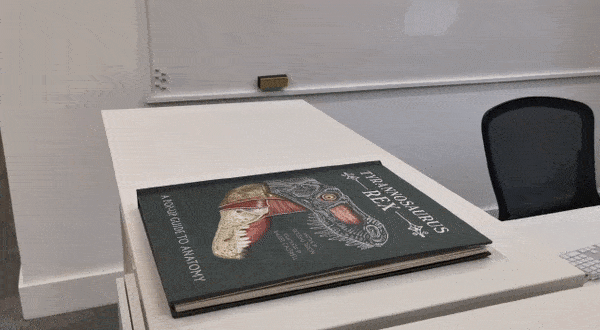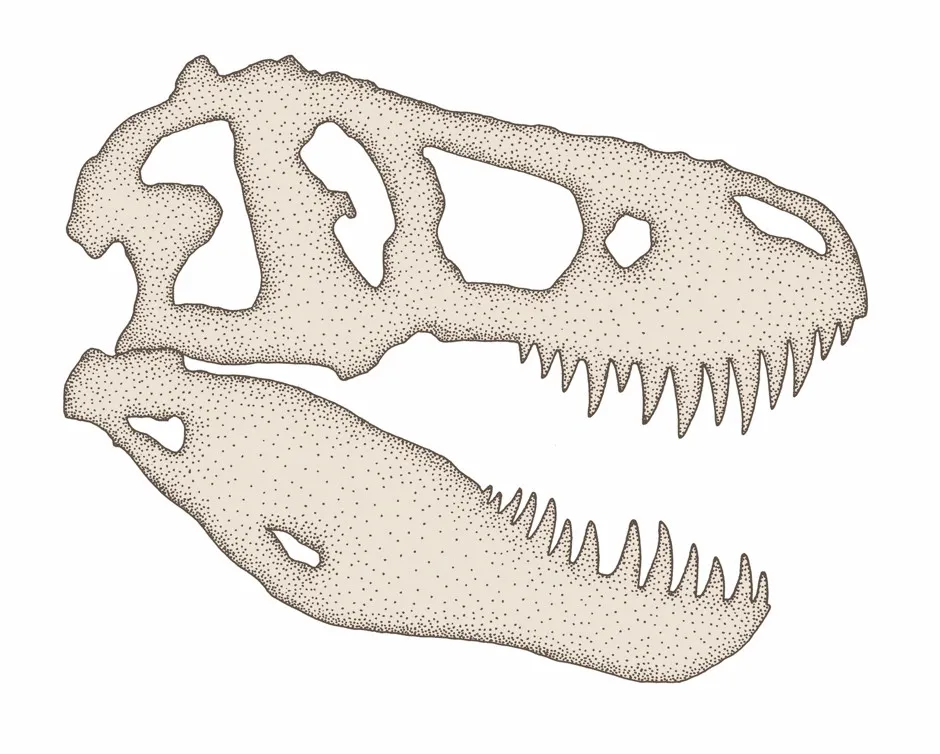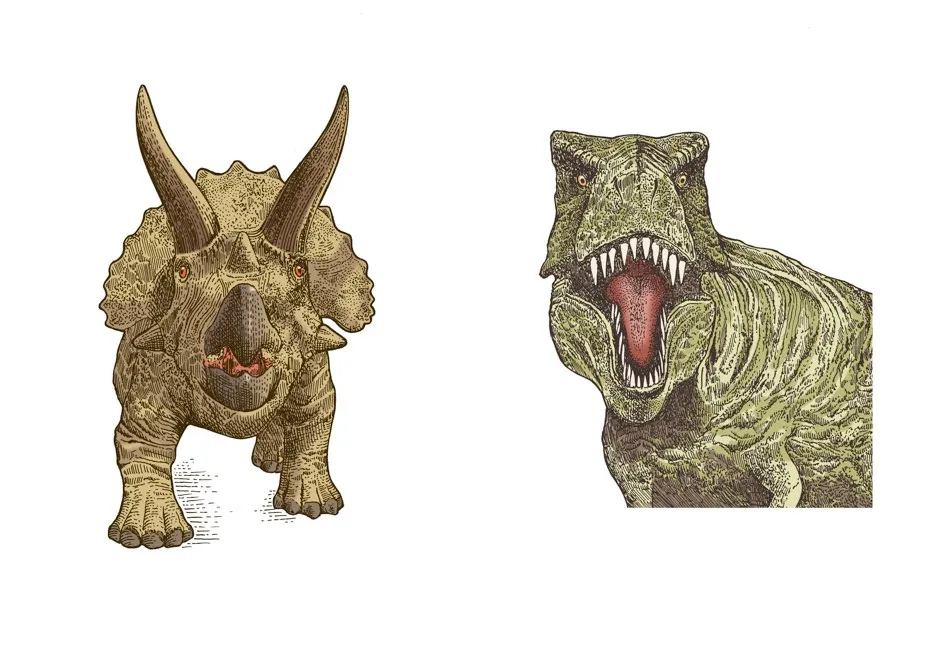There's a reason Tyrannosaurus rex’s name means 'tyrant lizard king': it was one of the greatest hunters to walk the Earth. Yes,T. rex was huge, weighing up to 14 tonnes, with serrated teeth, but its extraordinary senses were just as valuable in catching prey.
In this extract fromTyrannosaurus Rex: A Pop-up Guide to Anatomy, palaeontologist Dougal Dixon imagines the first dissection of a fully-preservedT. rex body.

Read more extracts from beautiful books:
- Journey underneath the skin with these amazing pictures from the new book Anatomicum
- Seven beautiful clouds to brighten your day
The head

We begin our dissection at the head. Measuring 1.5 metres from end to end, it contains the dinosaur's sensory organs, as well as its brain and its infamous teeth. Initial observations reveal the head is covered with scales, probably sensitive to touch, like those of crocodiles today. This suggests Tyrannosaurus rex may have carefully handled its young.
Peeling back the scales, we find the muscles of the jaws. These provided the force behind one of the strongest bites in history. We manipulate the jaw and find it can still open and close. I caution my team – the teeth are still sharp!
Next we remove the flesh from one side of the head, revealing the bones beneath. The jaw is lined with around 60 serrated teeth. Reaching lengths of up to 30 centimetres, they are the longest dinosaur teeth ever found.
The eyes
The eyes both point forwards. This means they would have worked together to give Tyrannosaurus rex sharp eyesight and help it accurately judge distances – important for any predator when closing in on its prey.
The tongue
Inside the oral cavity (mouth), the tongue is flat and fixed to the floor of the mouth. Some of the team are surprised to see that it bears no resemblance to the long, thin tongues seen in most lizards today.
The brain
The brain is around 30 centimetres long and housed deep inside the skull. It controlled essential functions such as breathing and digestion, as well as processing thought, and controlling the muscles.
Although the brain is small compared to the overall size of the dinosaur, the regions involved in smell, sight and hearing are well developed, suggesting this animal had keen senses.
The teeth
Carefully, we examine the teeth. Their shape is perfectly suited to the diet of an apex predator. At the front of the jaws are sturdy, cone-shaped teeth, strong enough to hold down struggling prey.
Behind these, the teeth at the edge of the mouth are thinner and serrated like steak knives, ideal for slicing through flesh and muscle fibre. The teeth at the back are strongest – these would have been used to crush bones with incredible force.
Senses
A look inside the skull of Tyrannosaurus rex reveals it had the sharp senses we would expect of a hunter. The sense organs of the eyes, ears, nose and tongue all fed information to the brain: the control centre for the whole nervous system. We carefully remove the brain to study it. This incredible organ suggests Tyrannosaurus rex was much smarter than previously thought!

Key to plate
- a) Olfactory bulbThe area for processing smell.
- b) CerebrumThe area for thought and memory.
- c) EpiphysisThe region that controlled sleep
- d) Pituitary glandA gland that controlled the release of hormones into the bloodstream.
- e) Optic lobeThe area joining the brain and eyes.
- f) CerebellumThe area responsible for movement and balance.
- g) Brain stemThe link between the body and brain also controlled essential functions such as breathing and digestion.
The brain
Previously scientists have only been able to study dinosaurs' brains by making casts of the braincase – the area of the skull that protected the brain from harm. Despite its small brain size at just 30 centimetres long, most scientists think Tyrannosaurus rex had a relatively high level of intelligence.
Eyesight
The eye sockets were angled forwards like those of modern hunters, meaning Tyrannosaurus rex could accurately judge distances – crucial for chasing down prey. From our studies we guess it could have seen objects up to 6 kilometres away.

Key to plate
- Triceratopshad peripheral vision.Peripheral vision: uses one eye, giving a wide field of view but no depth perception. Typically prey animals have good peripheral vision so they can spot predators to their side or even behind them.
- Tyrannosaurus rex had both peripheral and binocular vision.Binocular vision: Tyrannosaurus rex used both eyes together (binocular vision) to give it accurate depth perception. T. rex had a wide field of binocular vision – around 55 degrees. That's 13 times the field of a human.
Hearing
Deep inside the ear, the cochlea was unusually long for a theropod. This curly tube was filled with liquid which was moved by sound vibrations, and sent signals to the brain. A long cochlea suggests Tyrannosaurus rex had good hearing. It probably heard low-frequency sounds best, such as those made by the footsteps of other dinosaurs.
Senses in Action
We begin to build up a picture of an animal that was an active hunter, with a keen sense of sight and smell. However, Tyrannosaurus rex could well have been a scavenger too – few animals would pass up the opportunity to feast on the easy meal of a carcass! We see this today in apex predators such as lions, which fill out their diet with carrion.
Smell
At the front of the brain were two plum-sized regions called the olfactory bulbs, joined to the brain by the olfactory nerves. Both were much larger than those seen in other dinosaurs, suggesting smell was an important sense for Tyrannosaurus rex.
Tyrannosaurus Rex: A Pop-up Guide to Anatomy by Dougal Dixon, illustrated by Rachel Caldwell, is out now (£25, Templar Books).
